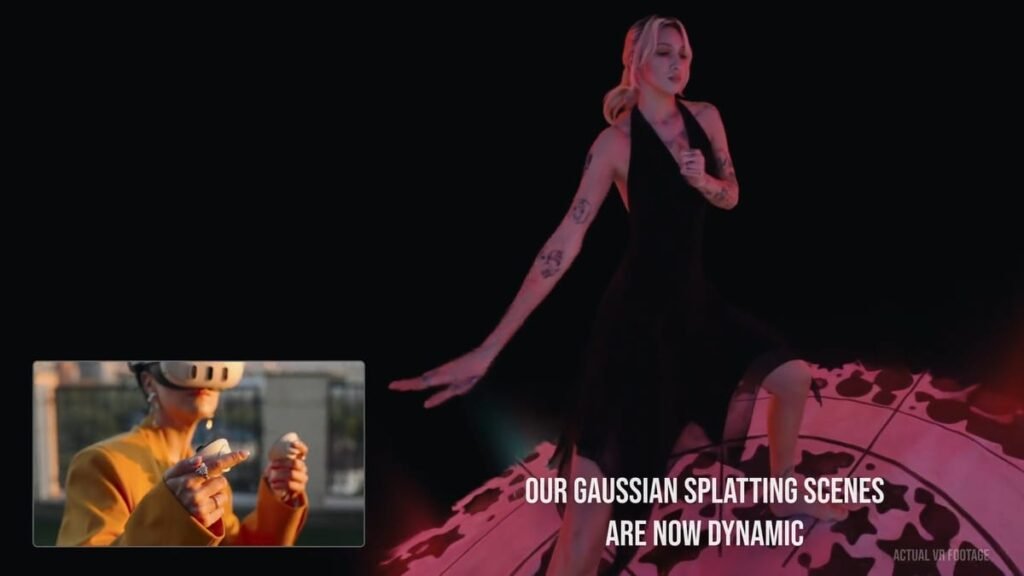Gracia added three brief Dynamic Gaussian Splats on PC VR – transferring volumetric captured scenes you can attempt now.
Easy stereoscopic 3D photographs and movies like Apple’s spatial video solely provide restricted parallax of a view of a scene introduced in a rectangle in entrance of you, and immersive 180° or 360° content material like Apple Immersive Video does the identical in a hemisphere or sphere.
However the holy grail of captured immersive content material is really volumetric scenes you can truly transfer your head and even stroll by – basically photorealistic VR, captured from the true world as an alternative of created by 3D artists in modeling software program. That is what Gracia delivers, in an early kind.
Gracia is feasible because of Gaussian splatting, a comparatively new approach for rendering 3D volumes by representing the scene as a set of overlapping 3D Gaussian capabilities. The corporate claims their particular Gaussian splatting rendering implementation is quicker than “another know-how available on the market”, which is how its stills can run on Quest 3 standalone with out a PC – albeit at a noticeably decrease decision.
The volumetric clips are referred to as Spinning Dancer (29 seconds), Household Second (19 seconds), and Shadow Boxing (8 seconds). You’ll be able to transfer round them with a thumbstick or simply stroll round your room together with your physique – they’re actually volumetric scenes.
Do not anticipate to see dwell occasions volumetrically streamed utilizing this know-how any time quickly, although, or to simply seize your individual.
Gracia says these clips had been captured utilizing costly 3D scanning studio rigs, and took six minutes to coach a single body. That equates to weeks of complete AWS compute time per minute, and although it may be parallelized to take much less time in actuality, it is nonetheless a big price.
Additional, the obtain measurement of those clips equates to over 300 megabytes per second. Which means streaming this sort of content material would theoretically take a 2.4 gigabit web connection, which barely anybody has. However Gracia expects its compression to enhance by no less than an order of magnitude inside a 12 months, making it potential on trendy quick web connections. It is also exploring utilizing cloud VR streaming.
Even with the present obtain resolution, there is a multi-minute decompression time. Gracia says that is principally to avoid wasting AWS storage bandwidth, and so they’re at the moment “rethinking” this method.
Spinning Dancer
Nonetheless, these minutes had been completely definitely worth the wait. Gracia’s transferring volumetric clips are a tantalizing glimpse of the way forward for media and leisure, and you probably have a gaming PC and a VR headset, it is best to go and take a look at it proper now.
Gracia is out there free of charge on Steam, and may work with any headset that helps SteamVR, together with Quest headsets through Steam Hyperlink, Air Hyperlink, or Digital Desktop. Gracia stills can be found standalone on Quest 3 and 3S, and the startup says it plans to carry transferring scenes to standalone too ultimately.
